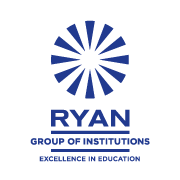Importance of Climate Studies in Education
In the grand theatre of nature, few phenomena are as spectacular as the Indian monsoon. This annual cycle of winds and rainfall, so intimately woven into our cultural and ecological fabric, is more than a meteorological event – it’s a living lesson on the dynamism of our planet. But have we tapped into the potential of this natural marvel as a tool for educating our young learners? The relevance and urgency of this question become evident when we consider the changing climate realities of our time. Incorporating climate studies, especially those focused on the monsoon, into our K-12 curriculum can significantly enhance our students’ understanding of their environment and its interconnected systems.
As responsible educators and parents of K-12 students, we are entrusted with the crucial task of preparing our children for the future. We often emphasize skills like problem-solving, critical thinking, and adaptability as keys to future readiness. However, climate literacy is an equally vital component of this toolkit. From analyzing monsoon patterns to understanding their far-reaching impacts, the study of climate provides a rich, real-world context for acquiring these skills. The monsoon, with its scientific complexity and socio-cultural significance, can be an engaging starting point for climate studies in our K-12 schools.
Globally, the importance of climate education is receiving increasing recognition. The Next Generation Science Standards, adopted by several states worldwide, call for the integration of climate studies across the curriculum. The monsoon, being an integral part of this context, forms the core of our climate studies initiative.
Monsoons influence various aspects of life in India, from agriculture and economy to health and education. Consequently, understanding the monsoon can foster interdisciplinary learning – a key educational goal in the 21st century. Through monsoon studies, students can apply scientific concepts, use mathematical tools, explore geographical impacts, and appreciate cultural nuances associated with this annual weather event.
In the following sections, we will delve into the ways we can incorporate ‘Monsoon Studies’ into our curriculum and the benefits this initiative offers to our learners.
Monsoon as a Learning Module
Understanding the Science behind Monsoons
Science education is the natural starting point for monsoon studies. Here, students can explore the intricacies of monsoon systems, understanding the reasons for their onset, the patterns they follow, and the factors influencing their variability. A practical understanding of concepts like evaporation, condensation, wind patterns, and thermal gradients can be established through the lens of monsoon meteorology.
Applying Mathematics in Climate Studies
At first glance, it may seem peculiar to suggest mathematical exploration through monsoon studies. However, the critique lies not in the combination itself, but rather in the conventional, abstract way mathematics is often taught. Inviting students to analyze historical rainfall data, make sense of probability through rainfall predictions, and visualize patterns via charts and graphs introduces a practical, relatable facet of mathematics. This real-world application allows students to appreciate the utility of math, a perspective often glossed over in traditional pedagogy.
Exploring Geography and Social Studies through Monsoons
Similarly, geographical and social studies often present a missed opportunity for deeper learning about the monsoons. The profound influence of monsoons on India’s geographic features and socio-economic conditions is undeniable. Nevertheless, education tends to focus on the recall of facts rather than an analytical understanding of these impacts. By emphasizing the role of monsoons in agriculture, their influence on water resources, and effects on regional economies and livelihoods, we can offer a more integrative, holistic understanding of these disciplines.
Promoting Environmental Awareness and Sustainability
Promoting environmental awareness and sustainability in schools is becoming increasingly crucial in the face of mounting global climate challenges. However, we must critique our current efforts for their tendency to treat these topics as standalone subjects. Using the monsoon as a theme for teaching environmental awareness can organically weave in discussions around biodiversity, climate change impacts on monsoon patterns, and sustainable practices such as rainwater harvesting, thus fostering an environment-conscious mindset.

Integrating Art and Culture in Monsoon Studies
Lastly, cultural education through monsoons is an area often overlooked. Monsoons have inspired countless Indian artists, poets, and musicians, yet our current curricula rarely exploit this cultural richness. Integrating monsoon-themed artworks, literature, and music into our climate studies initiative can help students understand how climate influences cultural expression, fostering a more profound connection with their cultural heritage.
Fostering Environmental Stewardship and Social Responsibility
An in-depth understanding of the monsoon’s impact on the environment and society can foster a sense of stewardship and responsibility among students. Learning about climate change effects on monsoon patterns or the significance of rainwater harvesting can make students more aware of their environmental footprint. Similarly, understanding the monsoon’s socio-economic impact can cultivate empathy towards communities heavily dependent on this weather phenomenon.
Creating an Interdisciplinary Learning Environment
By integrating various academic disciplines into monsoon studies, we not only broaden our students’ knowledge but also help them appreciate the interconnectedness of different fields of study. This interdisciplinary learning environment can stimulate curiosity, encourage innovative thinking, and prepare students for a world where boundaries between disciplines are increasingly blurred.
Enhancing Cultural Appreciation and Global Awareness
Incorporating cultural aspects into monsoon studies allows students to delve deeper into India’s rich cultural heritage. Understanding how the monsoon has influenced arts, literature, and music can deepen their cultural appreciation. Moreover, studying how monsoons and similar climatic phenomena occur in different parts of the world can increase their global awareness.
The Impact and Benefits of Monsoon Studies
As we venture into the idea of integrating monsoon studies into our K-12 curriculum, it’s crucial to look ahead at the potential outcomes. One could argue that merely acknowledging the monsoon’s relevance is not sufficient. Instead, we need to evaluate its educational implications in a manner that is analytical and future-oriented.
Development of Critical Thinking and Problem-Solving Skills
Monsoon studies, with their interplay of various scientific and socio-economic factors, offer a fertile ground for cultivating critical thinking. By analysing climate data, identifying patterns, predicting outcomes, and understanding impacts, students can develop the ability to approach problems systematically and think critically about potential solutions. These skills, honed in the context of real-world issues, can equip our learners to address complex challenges in their future careers and lives.
Fostering Environmental Stewardship and Social Responsibility
An in-depth understanding of the monsoon’s impact on the environment and society can foster a sense of stewardship and responsibility among students. Learning about climate change effects on monsoon patterns or the significance of rainwater harvesting can make students more aware of their environmental footprint. Similarly, understanding the monsoon’s socio-economic impact can cultivate empathy towards communities heavily dependent on this weather phenomenon.
Creating an Interdisciplinary Learning Environment
By integrating various academic disciplines into monsoon studies, we not only broaden our students’ knowledge but also help them appreciate the interconnectedness of different fields of study. This interdisciplinary learning environment can stimulate curiosity, encourage innovative thinking, and prepare students for a world where boundaries between disciplines are increasingly blurred.
Enhancing Cultural Appreciation and Global Awareness
Incorporating cultural aspects into monsoon studies allows students to delve deeper into India’s rich cultural heritage. Understanding how the monsoon has influenced arts, literature, and music can deepen their cultural appreciation. Moreover, studying how monsoons and similar climatic phenomena occur in different parts of the world can increase their global awareness.
In conclusion, while the integration of monsoon studies into our curriculum presents its own set of challenges, the benefits far outweigh these hurdles. This endeavour is not just an opportunity to enrich our educational offerings, but a commitment to fostering informed, responsible, and globally aware citizens. It’s high time we harnessed the power of the monsoon – not just as a weather phenomenon, but as a tool for holistic education.




